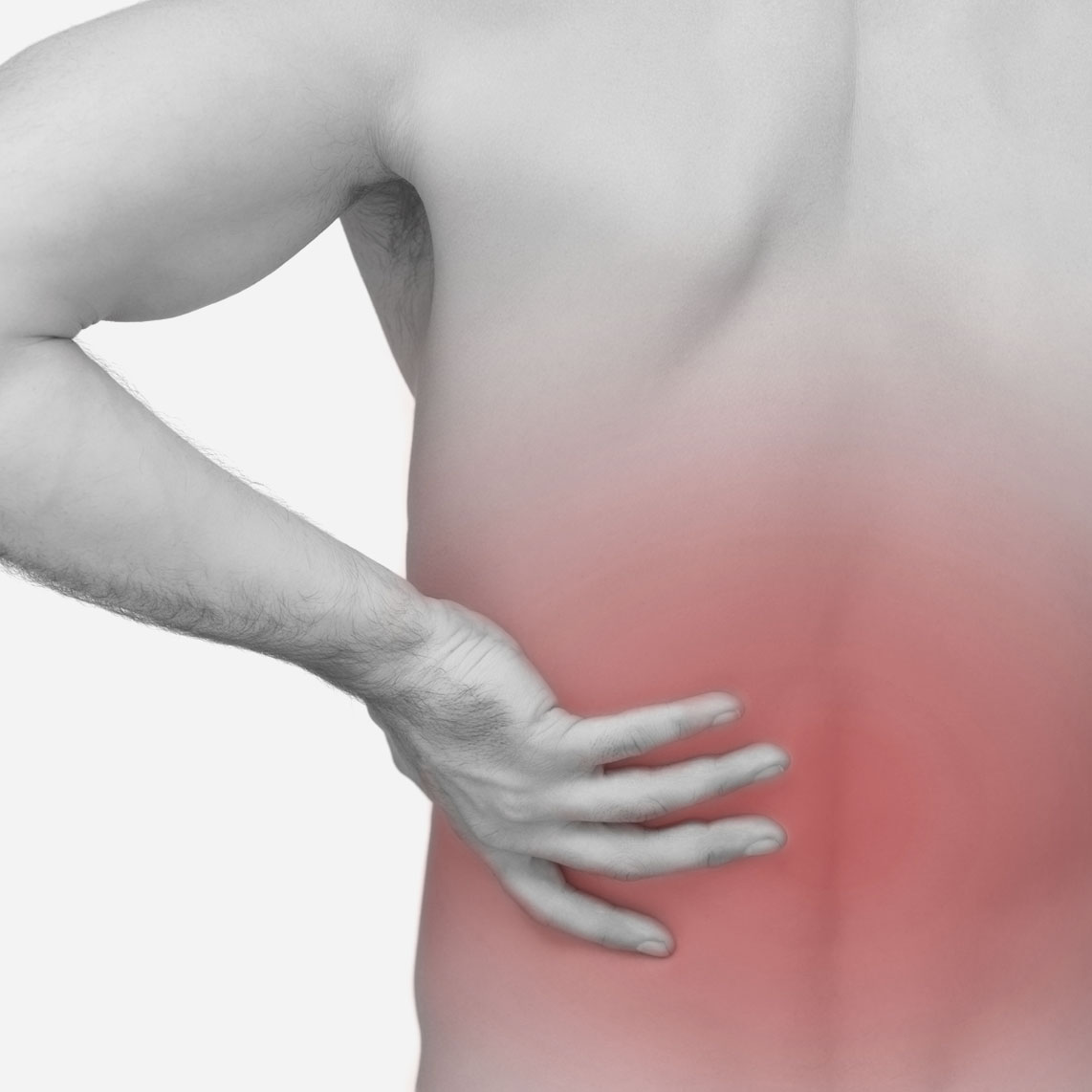Lower back pain

Overview
Lower back pain is an extremely common disorder affecting the bones and muscles of the back. It is a condition that often corrects itself in four to six weeks, yet for some it is disabling and can become chronic in nature.
The back is made up of interlocked structures such as bones, joints, muscles, ligaments and tendons. It is supported by the spine, which consists of 24 bones known as vertebrae, in addition to the sacrum and coccyx. Soft cushions called discs are found between the vertebrae that absorb pressure and allow the spine to move and keep the body upright. The lower back not only provides structural support and facilitates movement, it also protects our body’s tissues and organs.
Lower back pain often manifests as tension, stiffness or pain felt in the area. Pain of this type is usually felt during standing and moving the lower body. You can find more information about functional lower back pain below.
Functional lower back pain
Overview
The lower back, also known as the lumbar area, is responsible for a number of important bodily functions including structural support, functional movement and protection of our body tissue and organs. When we stand, bend, extend or rotate our bodies, the lower back is an integral part of these movements.
Most people will experience lower back pain at some stage or another in their lives. Aside from headaches, it is the most common nerve-related complaint. Injury to the parts of the lower back that control these movements have a big impact on us as the pain is usually felt during any movement that involves standing or moving our lower body.
An acute back injury may last up to three days, and chronic injury may take up to three months or more to heal.
Symptoms
Lower back pain can present in a wide range of symptoms, including:
- Pain to the lower back area that tends to be dull.
- Muscle spasms or local soreness in the lower back area.
- Numbness or tingling sensation in the lower limbs (legs, feet, toes).
- Unable to walk without experiencing pain.
- Weakness in the legs.
- Incontinence
- Fatigue
- Pain in the joints and abdominal muscles.
Causes
The most common causes of functional lower back pain are:
- Damage to the discs between the vertebrae that can lead to serious problems including a complete rupture of the discs if left untreated.
- Compression of the sciatic nerve against one or more bones caused by a herniated or ruptured disc of the lower back pushing on it.
- A lumbar strain through overuse or incorrect lifting technique causing microscopic tears to the muscles or tendons in the lower back. This is the most common lower back complaint.
- Reduced bone density through lack of calcium in the bones causing osteoporosis. This can result in fractures of the spine being sustained more easily.
- Poor posture when sitting or standing, putting extra and prolonged strain on the muscles, ligaments and discs.
- Congenital bone conditions such as scoliosis and spina bifida.
Diagnosis
Dan Everson Podiatry uses a thorough physical examination and in depth analysis of your health history to diagnose functional lower back pain.
Further testing to assess the extent of an injury may include blood and urine tests, X-ray and MRI imaging, ultrasound, bone scan and CT scan. In some cases testing of the nerves may be recommended.
Treatment
Most cases of lower back pain can be treated without surgery. Depending on the exact cause of your condition, Dan Everson Podiatry would typically recommend one or more of the following treatments to relieve your symptoms:
- Rest and avoid performing any physical activities or exercise that cause pain to the area.
- Use pain-relief and anti-inflammatory medication.
- Hot and cold compression treatments applied to the affected part of the lower back.
- Exercises that help speed the recovery process and strengthen the lower back when standing and walking.
- If you have an imbalance or biomechanical abnormality contributing to your back pain, Kinetic Orthotics from Dan Everson Podiatry may be prescribed and inserted into your footwear to help balance weight loading in the body and correct motion during walking and running to reduce symptoms. Dan Everson recommends its range of Kinetic Orthotics, which is designed using patent-protected technology to optimise the way you move and distribute force as you move.
- A back brace may be effective in restricting the way you move whilst recovering from a lower back injury.
- In some cases, surgical intervention may be required to treat the underlying cause.
Prevention
Avoiding an overuse or stress related injury to the lower back requires an understanding of the way your body handles movement and a constant focus on performing certain movements and lifts with the correct technique.
Some helpful methods to prevent an onset or recurrence of lower back pain recommended by Dan Everson Podiatry include:
- Stretching and strengthening exercises for the legs and lumbar area as prescribed by your podiatrist.
- Learn correct lifting techniques to protect your back from injury. Check how heavy an object is before you attempt to lift it or pick it up.
- Custom orthotics may be prescribed to help prevent this condition in those with a bodily imbalance or poor biomechanical function.
- Massage and acupuncture can also be useful if you feel back spasms or tension in your back.